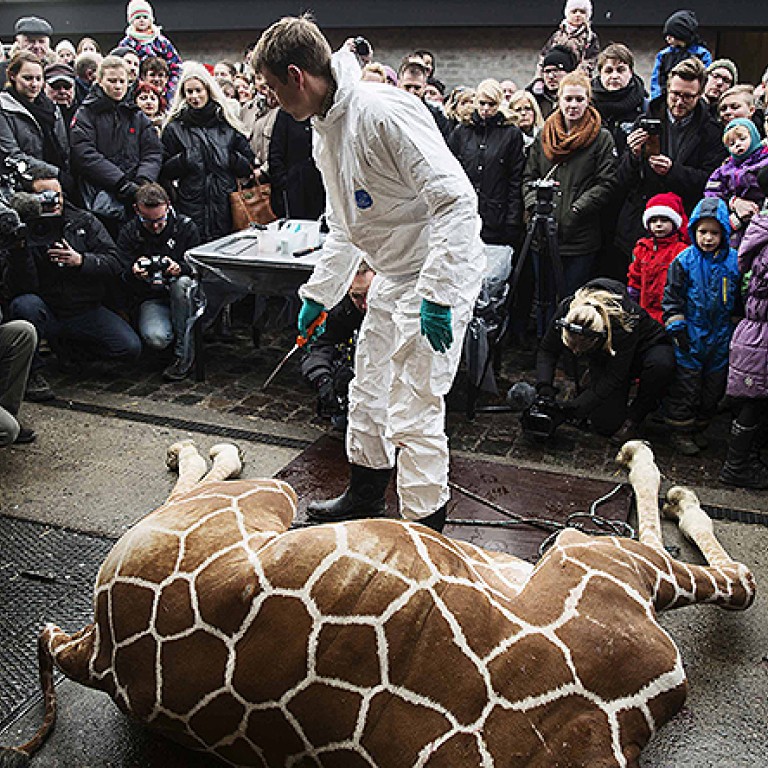
Culling animals for conservation fails the morality test
Hari Kumar says cold-hearted logic isn't enough to justify decisions
Going to the zoo on a Sunday with your children is usually a pleasant activity – unless you were in Copenhagen recently. The children who went there on a recent Sunday were witness to the carcass of a culled young male giraffe skinned in front of them.
The killing of Marius, an 18-month-old giraffe, evoked outrage across the globe as the zoo authorities ignored the pleas of thousands who joined online petitions against the cull.
The authorities said that the genes of the young animal were too common for a breeding programme they have, aimed at ensuring giraffes' long-term survival. Inbreeding was feared should he reproduce, so he had to die.
This very bureaucratic approach led them also to refuse offers from other zoos to take the animal, as they felt that space should be kept for a giraffe with rarer genes.
Bengt Holst, scientific director at the Copenhagen Zoo, defended the decisions in several media interviews, saying it was a necessary action based on scientific rationale. He also said the zoo saw the public autopsy as an opportunity to "educate people". The people, including children, who attended the autopsy "were very fascinated by the wonders of a giraffe", he said.
Just days later, another zoo in Copenhagen, which is also under the same wildlife conservation programme, said it may also have to put down a giraffe for a similar reason. The animal is a healthy male but if the plan to introduce a female giraffe got going, this giraffe would also have to be removed, the Jyllands Park Zoo said.
After raising another public outcry with this "hypothetical situation", the zoo now says the giraffe is safe. But only until such time when a cull becomes necessary, of course.
The scientific intention of the zoos' conservation programme is valid on paper but lacks two crucial elements - common sense and morality. The end is noble, but the means is not - just like their idea of providing scientific education to children by butchering the carcass in the open.
It was only a few weeks ago that another such well-argued animal conservation plan made us cringe when a bidder won an auction held in Dallas, in the United States, to shoot and kill a black rhinoceros in Namibia.
Officials in Namibia argued that the money they are getting through the auction - US$350,000 - would help their efforts to protect the rhinos in the wild.
Moreover, the argument went, the rhino chosen for the kill would be from a handful of old males that cannot breed any more and were turning out to be bullies.
The explanations of the Copenhagen zoo officials and Namibian officials are logical and practical, albeit a bit cold.
Indeed, the decisions are more akin to those of the Vulcan character in the series, Spock - based on logical deduction and devoid of human emotions.
If we look across the species facing trouble today and use the same kind of reasoning, it might provide some horrific, though scientifically rational, solutions.
One species in particular is a continuing threat to the environment, has been spreading too fast and too widely, consists of a fair number of non-productive individuals and has vast sections sharing common genes - .
By the logic applied in the above cases, a culling of our numbers would ensure and enhance the welfare of the rest of the species.
Arguments have been made in the past for exterminating non-productive and undesirable sections of the species, and someone might well snap up the right to do just that at an auction, if one were held.
But such logic fills us with revulsion.
That emotion, which overrides cold logic, is what sets us apart from other species, and makes us human.

